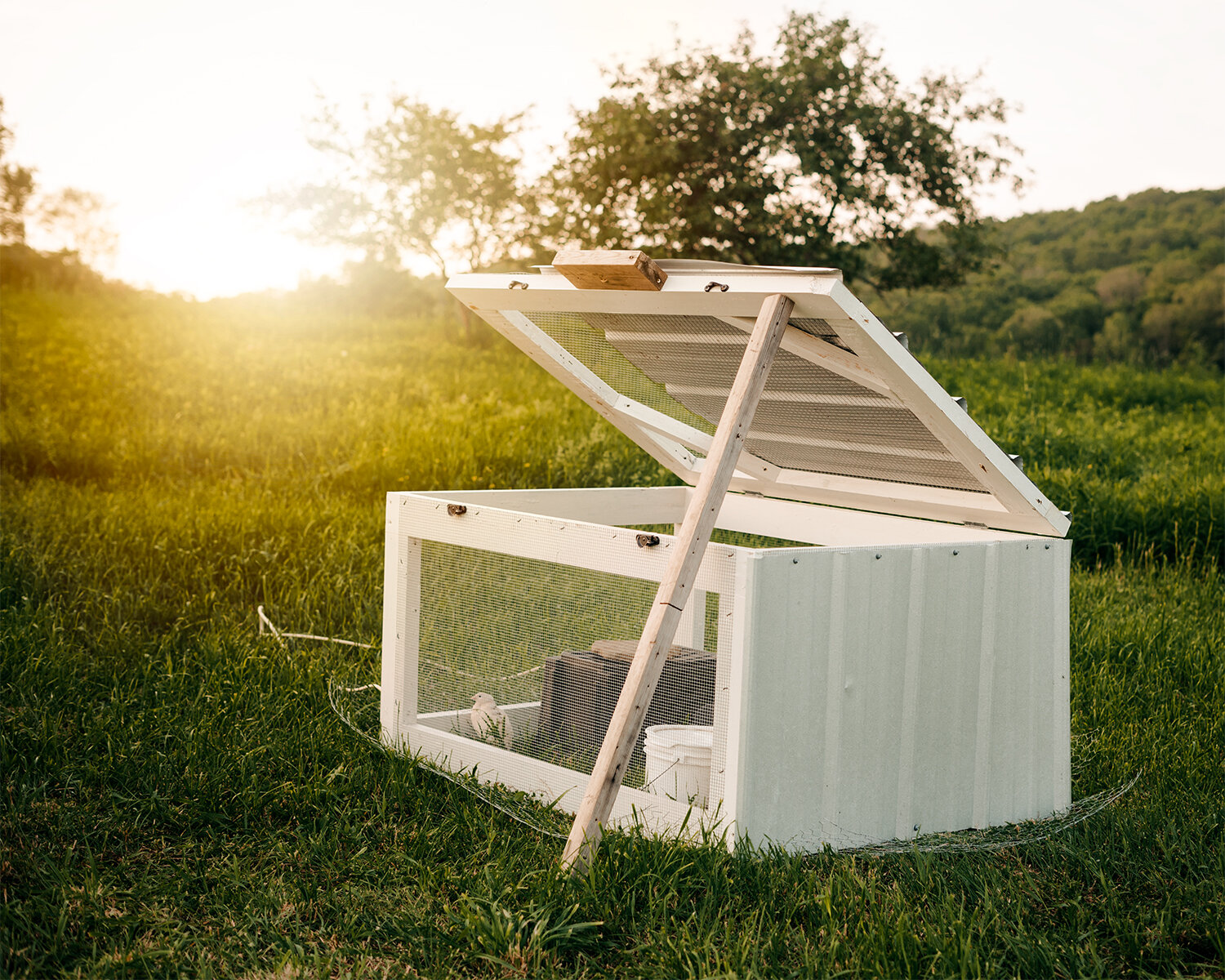Pasturing Quail in Tractors
The first quail eggs that were laid on the farm.
When I decided to introduce quail onto our farm, I knew two things:
First—I wanted to expose them to all of the tasty plants, bugs, soil minerals, and microorganisms that a pasture-life would offer. Second— I needed their shelter and care to be easy and cost effective. Pasturing Quail in Tractors was the perfect way to check off both of those boxes for me, and I’m going to share with you my personal way of doing it. Just keep in mind that this is what has worked for my specific situation, and might not be ideal for everyone.
Because quail were going to be a brand new venture for me on the farm, I wanted to do as much research as possible in advance to prevent as many newbie mistakes in the beginning as I could. Unfortunately, as I read and watched and googled and asked…I was finding that no one was really offering an exact solution to what I wanted to do…how could I raise quail as easily and cost-effectively as possible, while keeping them safe from both our northern-climate weather and abundant predators—all while raising them in a manner that would produce the healthiest eggs and meat in the form of some teeny-tiny, rotationally-pastured poultry and speckled eggs…
Here, in Western New York, our animals have to be hardy enough to face a number of threats at any given time of the year. We’re a very rural area with plenty of predators, including raccoons, foxes, mink, coyotes, hawks, eagles, owls, bobcats, and more…and that list doesn’t include the domesticated predators like neighboring dogs.
And if an animal isn’t trying to kill them, the weather often is. We face very cold winters with temperatures in the single digits, wind chills well below zero, and deep, accumulating snow. In the summer we have extremely humid conditions that can make temperatures feel much warmer than they actually are. Spring and fall are often quite pleasant, but depending on the year, can also bring some extreme weather conditions, too.
This certainly makes it ideal to control as much about the quails’ environment as possible…leaving less room for weather extremes to take a toll on their tiny bodies. However, quail are much hardier birds than they might appear at first glance. Although quail do not breed and winter in New York state (outside of a declining population of Bobwhites in Long Island), quail species were both found and released into the wild in Western New York for many years, and so given the right conditions, should survive.
In my research, I came across many people keeping their quail in cages, raised up high in either their chicken coops or in other out-buildings. Here’s why:
Quail don’t require very much space. I’m raising Coturnix, including some Jumbo Pharaohs, and their space requirements are about 1 square foot per bird.
Quail won’t “Free-Range” and return home. Quail will not stick to a “home base” like chickens and other backyard poultry. If not contained in some manner, they’ll quickly be gone, never to return.
Quail are very susceptible to predators. Their tiny size and ground-dweller status, make them prey to many creatures. One reason some people use a solid floor cage for their quail is to prevent rodents from chewing off their toes, in what seems like an otherwise safe cage with a wire floor.
Quail can contract numerous diseases from chickens, that they have a much harder time surviving. This is why most places will recommend keeping quail separate from chickens, or at least elevated off of the ground in cages above the chicken’s area.
It really is easy to see why cages are such a popular quail-housing option. They address so many of the quail’s weaknesses. Many people were using floors of wire to keep the quail out of their (surprisingly abundant) waste, and still others used a solid floor filled with litter for a more comfortable surface for their tiny feet as well as for predator protection. Either way, there was going to be the daily chore of managing this waste, which if not well managed, can very easily lead to excessive ammonia buildup and respiratory problems. A daily cleaning routine also cut into my requirement of quick and easy care. Using a tractor solved this issue—it would make it so that the quail could be on a comfortable, protective, solid surface, where the droppings would go directly onto a patch of ground to simply get left behind as fertilizer each time the enclosure was dragged to a new spot. Since dragging the tractor takes under a minute, it is an easy task to incorporate into a daily routine.
Because quail don’t require a very large area, a tractor, like a suspended cage, can be small, and thus rather inexpensive. Our current land situation allows me to keep the quail on a patch of ground very distant from our chickens to prevent the disease transmission that others warned against. However, I don’t know how essential this physical separation actually is. Many of the diseases that I read about being problematic in quail, which could be spread from a chicken, were diseases that could also be transmitted by wild birds. Although keeping them in suspended cages would certainly reduce or eliminate their exposure to wild bird droppings, I have had no issues with my birds on the ground. And, I would imagine that if your chicken pasture is not overcrowded, and your flock is well cared for and healthy, your quail are not very likely to pick up diseases either. Personally, I only have anecdotal evidence that the tractor setup is safe enough as far as diseases are concerned, but obviously every situation is going to have its drawbacks. I feel that the benefits of being in contact with the minerals and microorganisms of the natural soil of the Earth, outweigh the risks of disease transmission.
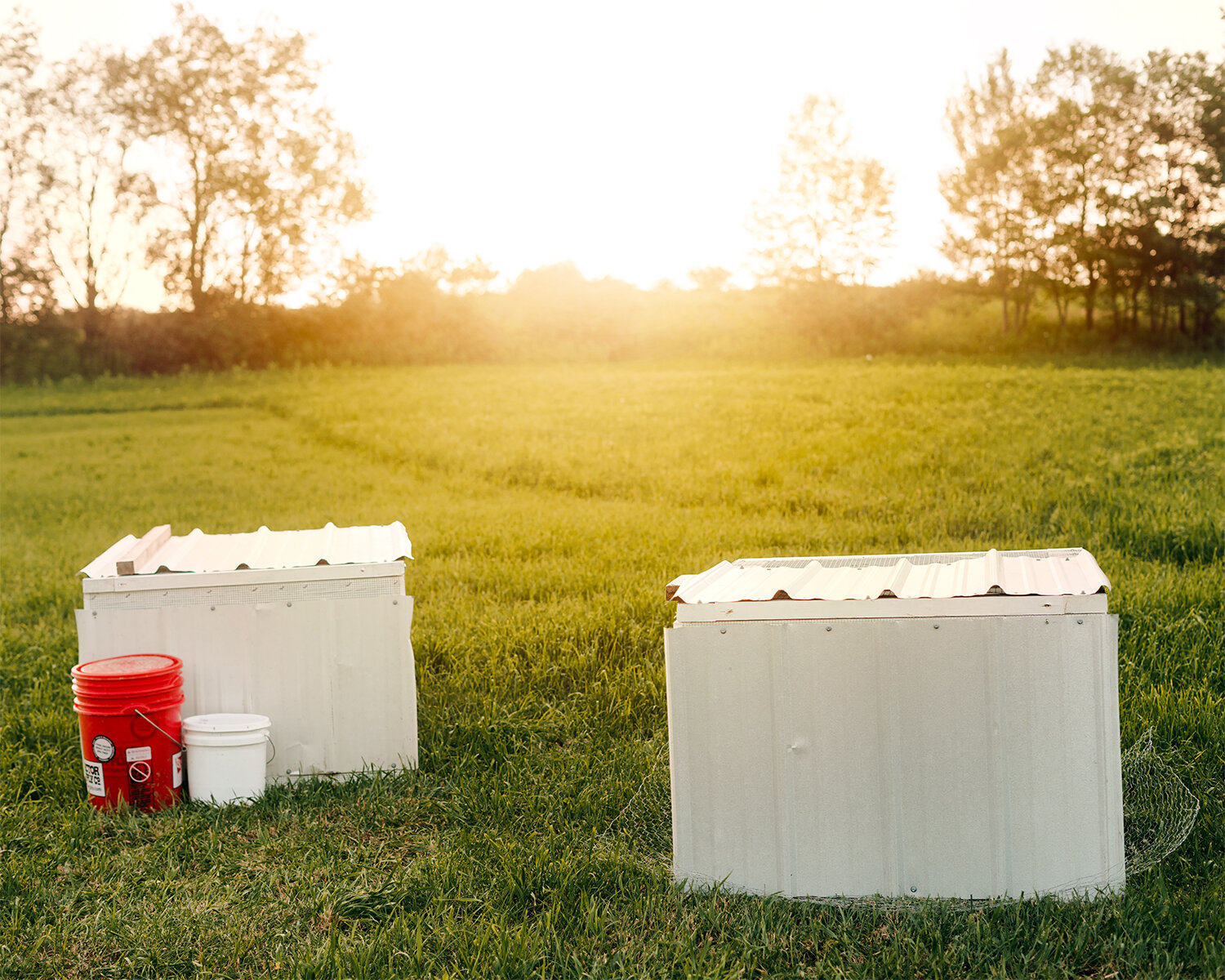
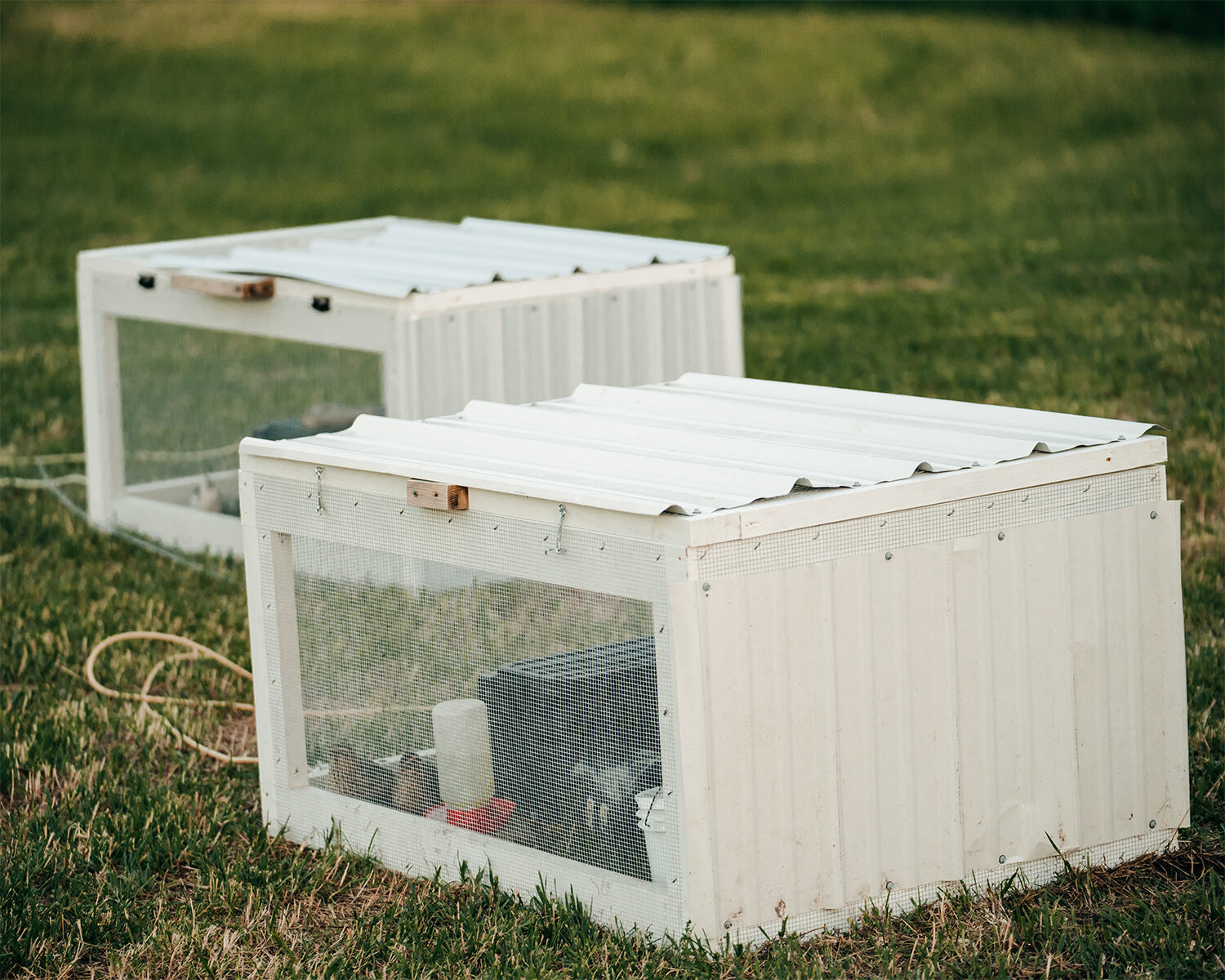
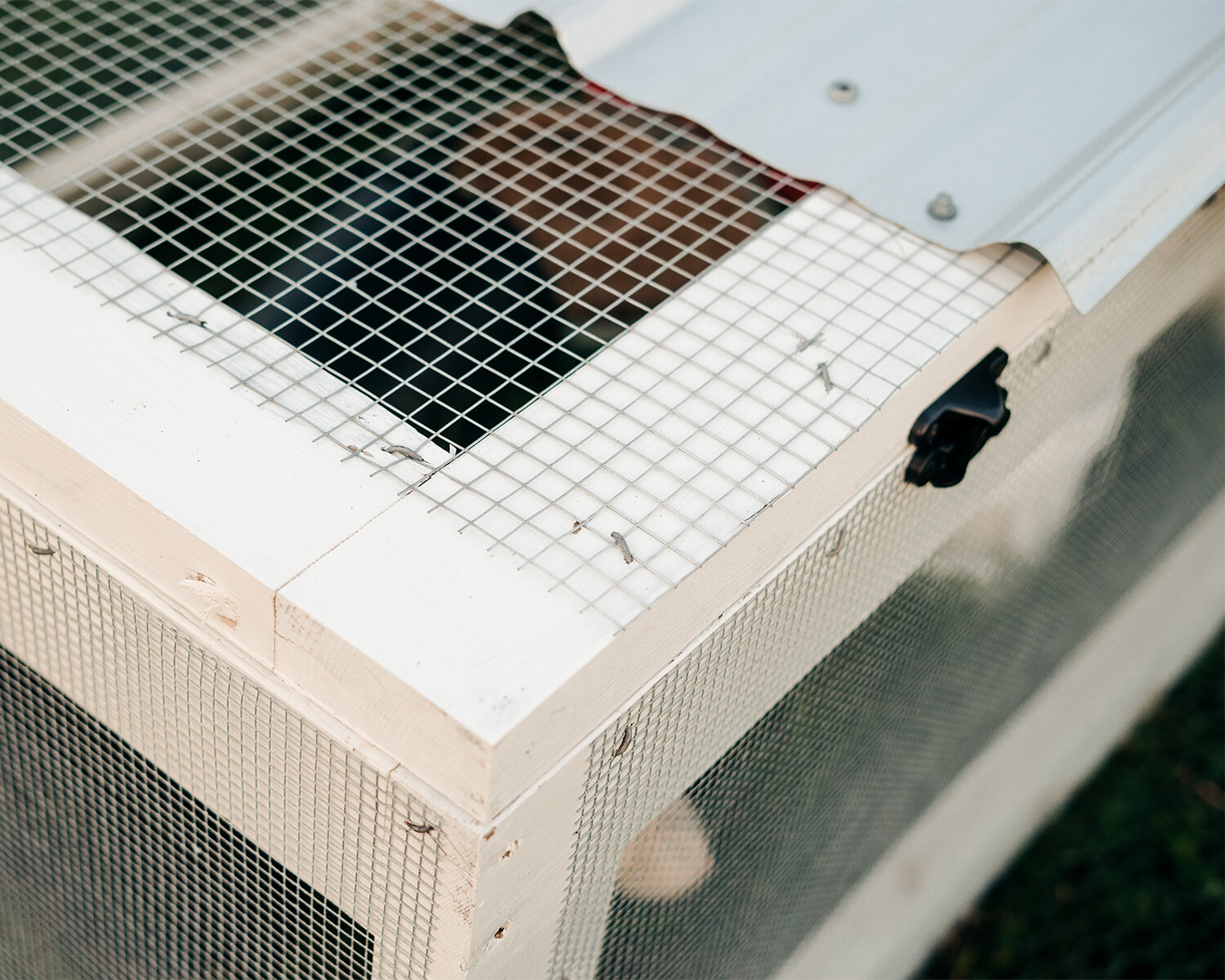
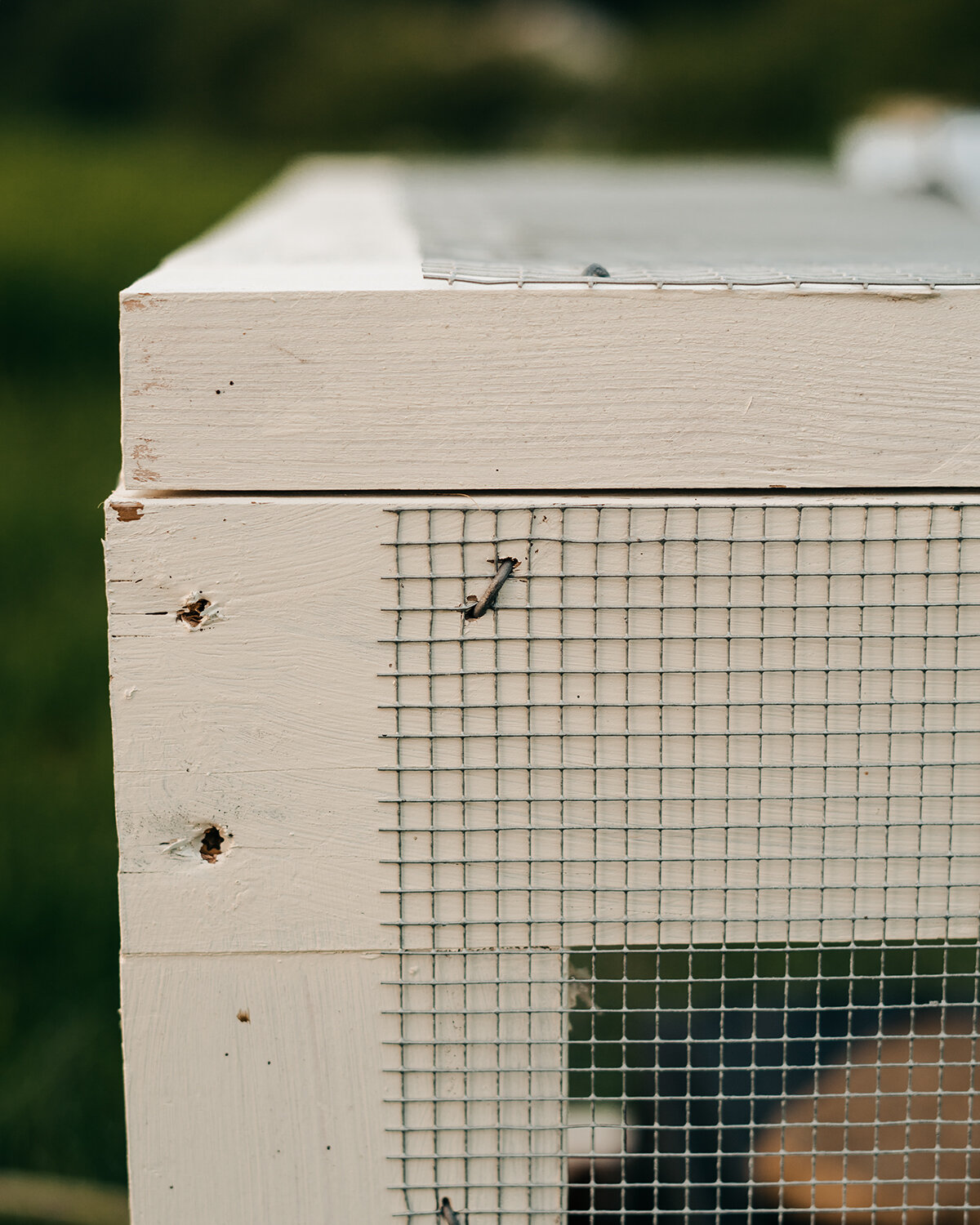
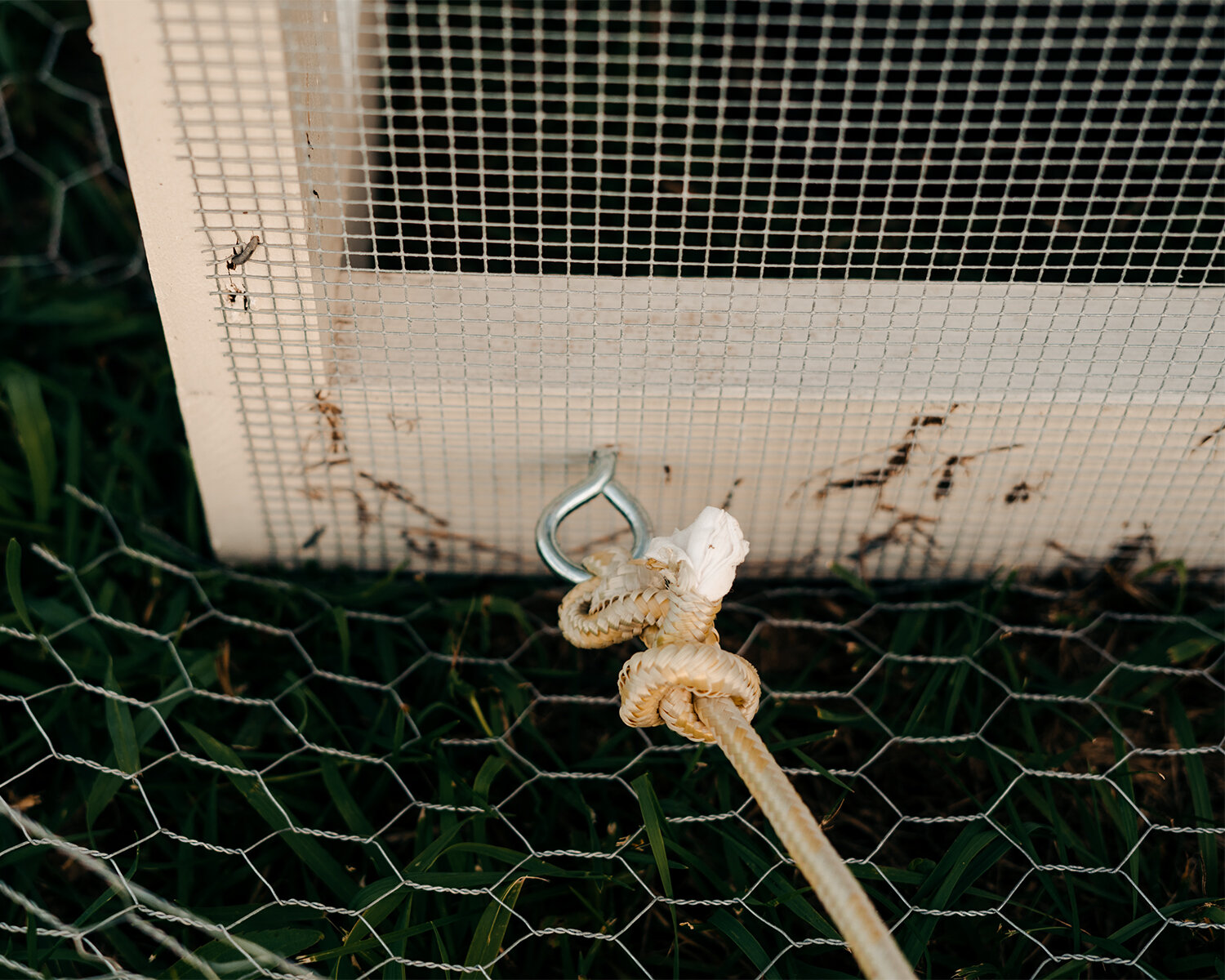
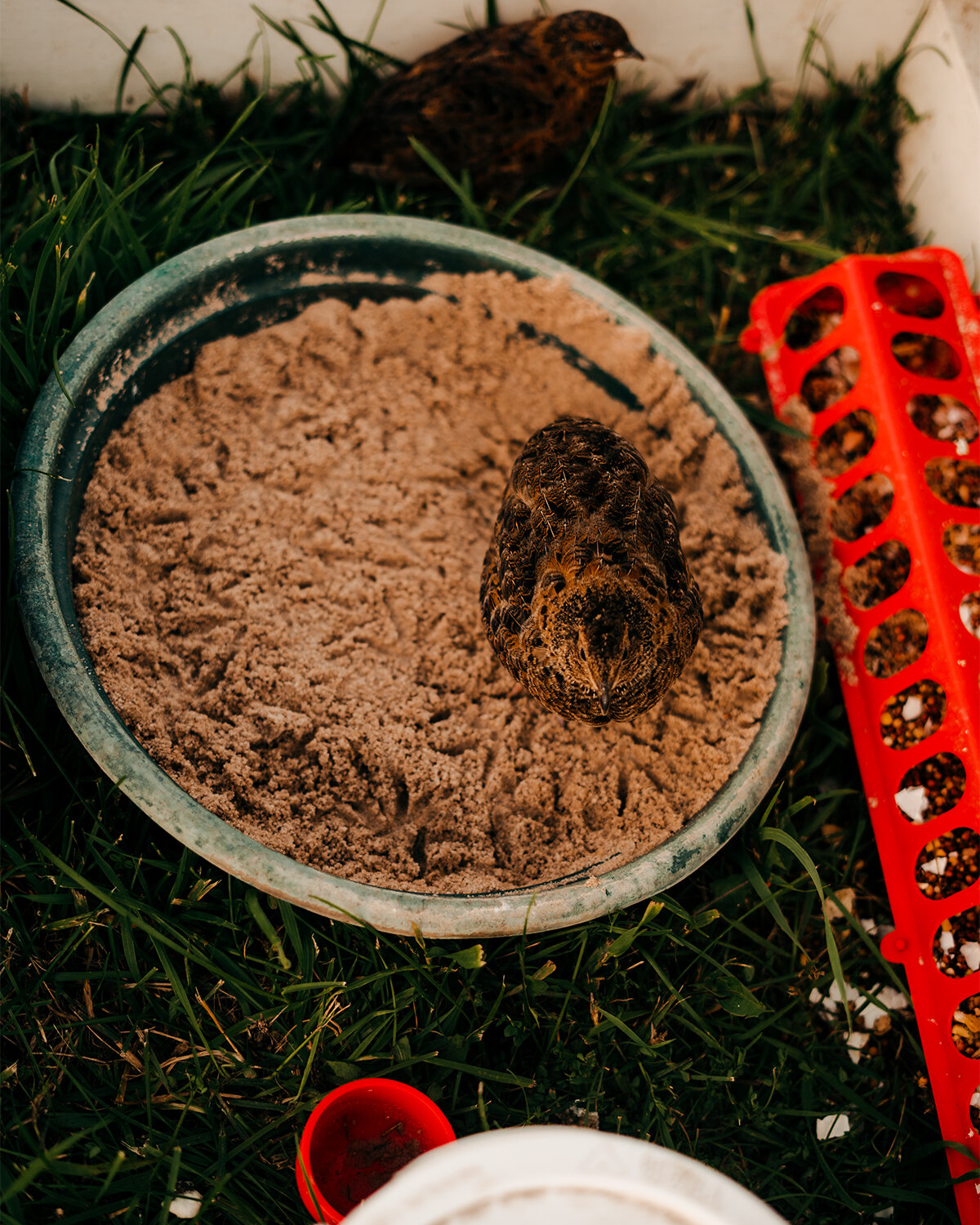
Probably the larger threat to the quail for my situation is the predators that will have access to the tractors. So, how predator proof is the tractor design? Obviously, suspended cages inside of a coop have the added layer of protection of being locked inside of a building at night. I had initial concerns of predators either flipping over the tractors or digging under the sides. Keeping the tractors inside of electric poultry netting will solve these threats from predators. However, because the netting is expensive, I haven’t incorporated it into my setup yet, and still (knock on wood) I haven’t had any predator issues. I did add a chicken wire skirt to one of the three tractors to deter digging, but I’ve seen no evidence of digging either way (although, this certainly doesn’t mean that they aren’t at risk. Electric netting, once in the budget will be a must to ensure nighttime protection.)
The basic tractor design is a 4’x3’x2’ box with a lid. I used scrap 2x4 lumber and some leftover paint and pieces of metal roofing. To prevent raccoons and rodents from reaching the quail, I used ¼” hardware cloth, rather than chicken wire, for strong protection. My local hardware store didn’t sell anything small enough, so I purchased some very affordable rolls on Amazon.
I used this slightly larger hardware cloth on the lid, since it would also be covered in metal. I had purchased this larger wire to have around for some other animal projects that I have planned.
A tractor-style enclosure is perfect for warmer months, but what about in wintertime when the snow makes moving it difficult or even impossible? My plans for when the weather turns cold are to cover at least two more sides of the tractor with metal and stack bricks to form a sort of foundation to park the tractor on. I’ll then fill this foundation with a few inches of sand that will act as a scoop-able, drainable litter. This could be done outside on the ground, in an outbuilding like a garage, or even in an unfinished basement with a concrete floor. Since this will be my first winter with quail, this plan is currently untested, and I’ll be sure to update how successful this actually is in practice, once the cold weather hits.
If you decide to download and give our tractor design a try, let me know your thoughts on it and how the tractor works out for you. If you have any design tweaks or suggestions, feel free to share! This is a new experiment, and although so far it’s working great, I know there’s always room to do things better. I’ll be sharing more about just how I care for my quail in upcoming posts, including how I make the best waterers for them, using these watering cups! In the meantime, let me know if you have suggestions for future topics!
*This post contains affiliate links…please watch this video to learn more about our links:
Author: Laura
Farmer/Artist/Biologist, and founder of Wing & Wool Farm and Egg Alchemy Skincare…all around animal-lover, passionate about pastured-poultry, humanely-harvested wool, and sharing the joy and magic of a fulfilling, homesteading lifestyle.
